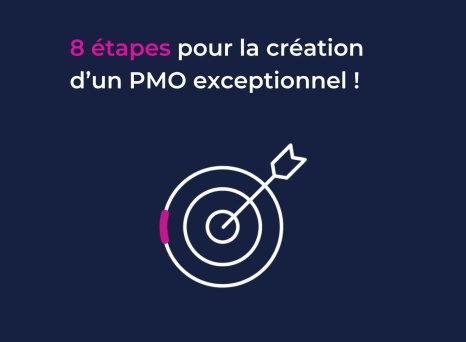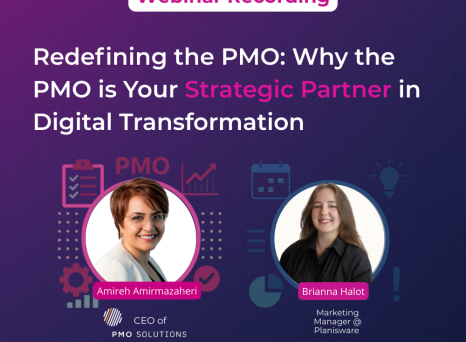Agile methodologies have come a long way since their creation at the beginning of the 2000s as a team-level management technique to today's Agile at scale frameworks like SAFe (Scaled Agile Framework), LeSS (Large Scale Scrum), DAD (Disciplined Agile Delivery) or Nexus.
However, companies who have implemented Agile are still struggling to realize its promised benefits.
In this extract from our Webinar “How Agile PMOs can support Financial Planning“, Margo Visitacion, Vice president and principal analyst with Forrester, one of the leading analyst IT advisory firms, shows us where the divergences between expectations and actual benefits are, and why the PMO is key in bridging the gap between them.
Transcript below - (Lightly redacted for clarity)
When it comes to delivery, Agile is now in the mainstream; the speed of Agile is now in the mainstream. Agile and DevOps, at the team level, is now the new normal.
Over half of organizations that we surveyed in our Agile development online survey, are using Agile development practices.
- 56% have adopted DevOps.
- 24% are now building apps on demand, which drives far more customer responsiveness in being able to deliver what customers want.
- And 32% are actively embracing DevOps with Agile together to have continuous deployment of features for digital products.
When you have the speed of delivery you've got to have stronger alignment on the planning side, in order to make sure that organizations are achieving their strategic objectives. Because we see that the speed of delivery is why organizations are going to Agile, to get product faster, to be able to beat the competition, but if you don't drive alignment between strategic planning and portfolio delivery, you're going to have a gap between the expectations of Agile and the value that Agile that actually delivers.
When we surveyed Agile developers and we asked them what are the benefits expected by your business when using Agile versus what were the benefits actually achieved by your organization when using Agile, we see some significant gaps.
- Better business and IT alignment, you'll see a significant gap here. 71% of the respondents expected to have better alignment, but in reality only 58% achieved that better alignment.
- 75% expected faster delivery of solutions, but only 49% actually achieved it.
- When you're looking at greater frequency of releases, again you see a gap.
- Ultimately, what happens is you're experiencing the biggest gap of all. 78% of organizations adopted Agile because they wanted to achieve faster business value, when only 49% actually did achieve that faster business value.
- This here again demonstrates that there has to be better communications, better planning practices and faster feedback to course-correct if you're not achieving these expected results, and this is another area where the PMO, transforming to an Agile Portfolio Management Office, can help close the gap between expectations and reality, and help organizations actually achieve Agile at scale.
So where do these gaps come from?
- Agile benefits are sometimes exaggerated: In promoting adoption of Agile methods, Agile proponents generally tout productivity advantages of 10%, 20%, 30% or more. However, these benefits are sometimes oversold, as the advantages generally do not scale to larger teams.
- The benefits of Agile can be subtle, and difficult to quantify: For example, what's sometimes lost is that the feedback received by the Agile team keeps their work on target, and that they often waste less time on YAGNI – “You Ain't Gonna Need It” features. Additionally – and as noted in studies by Quantitative Software Management (QSM, a leading software measurement firm; see their view on successful project delivery) – besides lower productivity, larger teams must also deal with greater complexity, raising quality and other risks, on both projects and product enhancement work.
- Agile methodologies require a change in mindset: Change, especially on an organizational scale, is difficult, and it is easy to accidentally perpetuate habits, processes, and modes of thinking of “classic” waterfall project management.
Johanna Rothman, one of the few people that witnessed firsthand the emergence of Agile applied to programs, expertly delves into this in her speech on the challenges companies face in changing their mindset to Lean principals.
Some aspects of enterprise management are also not quite caught up with the consequences of implementing Agile on a large scale. This is the case with Financial planning and Resource management, as Margo explains in the webinar.
Stay tuned! Through the month of August, we will revisit some of the key messages from Margo's webinar, so be sure to come back and read the next instalment!


